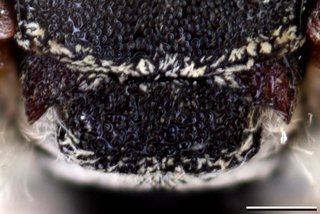
Thomas Onuferko · 9
Epeolus erigeronis, Axillae mesoscutellum female |
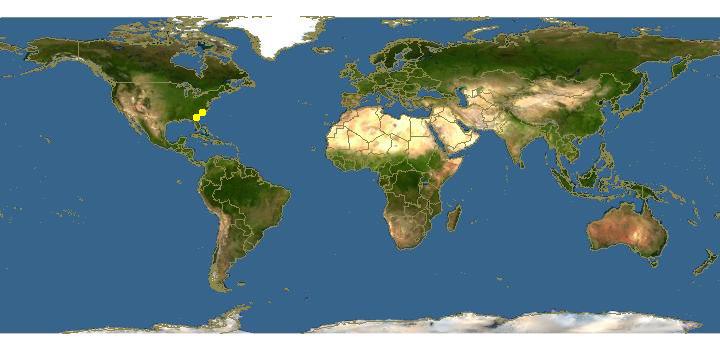
Click on map for details about points.
|
80x5 -
240x3 -
240x4 -
320x1 -
320x2 -
320x3 -
640x1 -
640x2
Set display option above.
Click on
images to enlarge. |
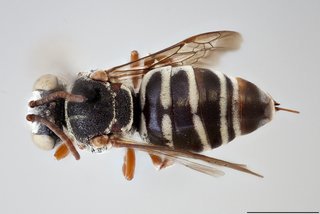
Thomas Onuferko · 9
Epeolus erigeronis, Dorsal view female |
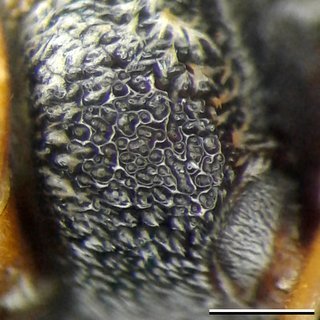
Thomas Onuferko · 9
Epeolus erigeronis, female mesopleuron |
|
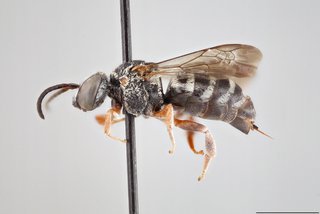
Thomas Onuferko · 9
Epeolus erigeronis, Lateral view female |
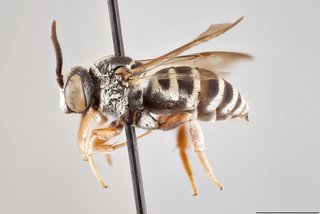
Thomas Onuferko · 9
Epeolus erigeronis, Lateral view male |
|
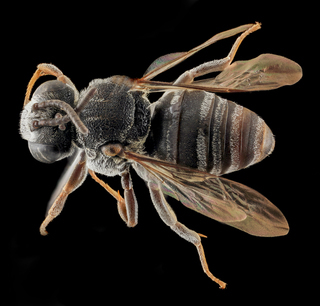
© Copyright source/photographer
· 5
Epeolus erigeronis, M, Back, NC, Moore County |
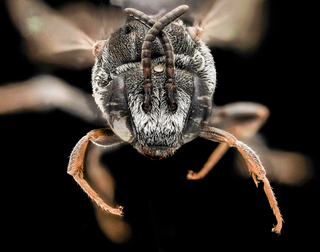
© Copyright source/photographer
· 5
Epeolus erigeronis, M, Face, NC, Moore County |
|
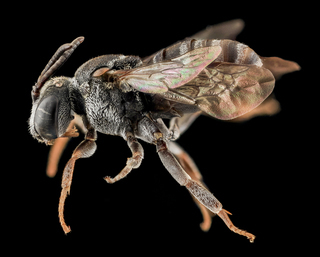
© Copyright source/photographer
· 5
Epeolus erigeronis, M, side, NC, Moore County |
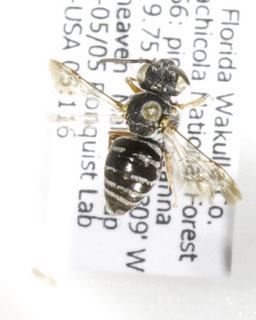
Barcode of Life Data Systems · 1
Epeolus erigeronis, Barcode of Life Datata Systems |
|
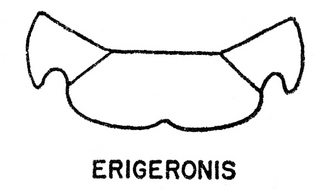
© Rebekah Andrus Nelson
· 1
Epeolus erigeronis, both, top of thorax |
|
Overview |
Reprinted with permission from: Mitchell, T.B. 1962 Bees of the Eastern United States. North Carolina Agricultural Experiment Station Technical Bulletin No. 152.
FEMALE�Length 8-9 mm.; black, legs and tegulae testaceous, spurs yellow, tubercies more or less testaceous, mandibles more ferruginous except at tip, and basal segment of flagellum, along with base and apex of the scape, brownish-testaceous, flagellum otherwise more piceous; lateral ocelli separated from margin of vertex by about their own diameter, cheeks about half width of eyes, posterior margin carinate; median length of lab- rum somewhat greater than half the width, more or less ferruginous, with a pair of obscure, subapical tubercles; inner margin of mandible nearly entire, without a distinct angle or tooth; posterior margin of scutellum nearly straight, not evidently grooved medially (fig. 110); axillae strongly divergent from sides of scutellum, the acute tips reaching about to its mid transverse line, lateral margins obscurely carinate, with a resulting, quite distinct, lateral surface which is rather narrow; wings with the usual three submarginal cells, sub-hyaline basally, becoming rather deeply infuscated apically, veins brownish-piceous; face around and below antennae rather densely white tomentose, cheeks somewhat more thinly so, and vertex entirely exposed, with only very fine, suberect hairs; venter of thorax rather thinly white tomentose, not obscuring surface, pleura below exposed, becoming rather densely tomentose above; margin of pronotum rather thinly white tomentose, and tubercles with a marginal fringe; scutuna with a pair of obscure, anterior, longitudinal lines on each side of midline, and scutellomesothoracic suture thinly tomentose; metanotum densely white tomentose beneath the thinly tomentose, slightly overhanging scutellum; posterior face of propodeum densely white tomentose at each extreme side; anterior face of basal abdominal tergum densely white tomentose, this narrowly continuous with an apical tomentose fascia which is narrowly interrupted medially and slightly removed from apical rim, the resulting black patch transverse, very wide, the black tomentose hairs very short and inconspicuous; terga 2-4 with apical, whitish, tomentose fasciae, this slightly interrupted on 2, and lateral portion of disc on tergum 2 with a white tomentose patch, tergum 5 with a thinly white tomentose area on each side; tegulae very closely, finely, deeply and regularly punctate throughout; punctures of vertex, cheeks and uppev part of face quite deep and distinct, close along vertex, back of eyes al ocelli, becoming somewhat more distinctly separated below, but very minute and densely crowded below antennae; scutum quite coarsely rugosopunctate, with some very narrow, indefinite, shining interspaces; scutellum and axillae much more coarsely reticulate; pleura coarsely reticulate below, becoming somewhat more finely and densely rugose above; punctures of abdominal terga very fine, uniform, rather close but not contiguous on the more basal terga, becoming more minute and almost crowded on the more apical terga; pseudopygidium quite extensive, median length coniderably greater than half the width.
MALE�Agrees in general with description of female, but wing veins are more yellowish and venter of the thorax is more densely silvery tomentose; pygidial plate somewhat longer than basal width, rather narrowly rounded, margin carinate, surface rather smooth, with scattered, suberect hairs.
TYPES�Holotype: Female, Levy Co., Fla., Apr. 13, 1955. Allotype: topotypical (both H. V. Weems, Jr., on Erigeron quercifolius). Paratypes: FLORIDA: 3 ♀♀, topotypical; 1 ♀, Alachua Co., Apr. 15, 1955 (on Melilotus alba); 2 ♀♀, Marion Co., Apr. 6, 1956 (on Erigeron quercifolius); 1 ♂, Osceola National Forest, Columbia Co., Apr. 19, 1954 (all H. V. Weems, Jr.); 1 ♂, Baker Co., May 27, 1937 (O. D. Link); 1 ♂, Olga, Mar. 30, 1954 (K. V. Krombein, on sand flats); 1 ♀, Highlands Hammock State Park, Apr. 7, 1955 (Mitchell) ; 1 ♀, LaBelle, Apr. 18 (J. N. Knull). GEORGIA: 1 ♂, 2 ♀♀, Billy�s Island, Okefenokee Swamp, June 1912; 1 ♀, Fort Gordon, Richmond Co., June 8, 1958 (R. R. Snelling). NORTH CAROLINA: 1 ♀, Southport, June 24, 1928 (Mitchell, on Hypericurn); 1 ♂, Wake Co., June 16, 1955 (H. V. Weems, Jr.); 1 ♂, Highlands, Macon Co.. July 23, 1955 (Mitchell).
Paratypes are in collections of the State Plant Board of Florida, the U. S. National Museum, Cornell University, R. R. Snelling and the author.
|
|
|
Identification | |
Extracted from: Onuferko TM (2018). A revision of the cleptoparasitic bee genus Epeolus Latreille for Nearctic species, north of Mexico (Hymenoptera, Apidae). ZooKeys 755: 1–185. https://doi.org/10.3897/zookeys.755.23939
Diagnosis. The following morphological features in combination (excluding any that
are specific to the opposite sex of the one being diagnosed) can be used to tell E. erigeronis apart from all other North American Epeolus except E. ilicis and E. inornatus:
the mandible is simple; the axilla does not attain the midlength of the mesoscutellum
but the free portion is distinctly hooked, with the tip unattached to the mesoscutellum for more than 1/3 of the entire medial length of the axilla; the pronotal collar
and metasomal terga are black; the metasomal terga have rather fine punctures; and
the pseudopygidial area of the female is distinctly campanulate with the apex <2 × the
medial length and not in contact with two large patches of pale tomentum (one on
each side) throughout its length (in contact only at apex, diverging basally). Although
in all three species the mesopleuron is closely and evenly punctate, in E. erigeronis the
punctures are more variable in size, with many smaller punctures among large ones,
and most interspaces are narrower such that the surface appears to be very coarsely and
densely rugose-punctate. By contrast, in E. ilicis and E. inornatus the mesopleuron has
punctures that are similar in size and shiny interspaces that are commonly equal to the
puncture diameters.
Redescription. FEMALE: Length 8.6 mm; head length 2.2 mm; head width 3.0
mm; fore wing length 6.3 mm.
Integument coloration. Mostly black; notable exceptions as follows: partially to entirely ferruginous on mandible, labrum, antenna, pronotal lobe, tegula, and legs. Mandible
with apex darker than all but extreme base. Antenna brown except scape, pedicel, and
F1 orange in part. Pronotal lobe and tegula pale ferruginous to amber. Wing membrane
subhyaline, apically dusky. Legs more extensively reddish orange than brown or black
Pubescence. Face with tomentum densest around antennal socket. Tomentum
slightly sparser on clypeus; upper paraocular and frontal areas, and vertexal area mostly
exposed. Dorsum of mesosoma and metasoma with bands of off-white to pale yellow
short appressed setae. Mesoscutum with paramedian band. Mesopleuron with upper
half hairy, except beneath base of fore wing (hypoepimeral area); ventrolateral half
nearly bare. Metanotum with tomentum uninterrupted except for median bare patch
in posterior half, uniformly off white. T1 with discal patch quadrangular and very
wide, the basal and apical fasciae only narrowly joined laterally. T1 and T2 with apical
fasciae interrupted medially, those of T2 and T3 somewhat broader laterally, T2 with
fascia with faint anterolateral extensions of sparser tomentum. T3 and T4 with fasciae
complete. T5 with two large patches of pale tomentum lateral to and separate from
pseudopygidial area. T5 with pseudopygidial area campanulate, its apex less than twice as wide as medial length, indicated by silvery setae on impressed disc of apicomedial
region elevated from rest of tergum. S5 with apical fimbria of coppery to silvery hairs
extending beyond apex of sternum by 1/3 MOD.
Surface sculpture. Punctures dense. Labrum with larger punctures than clypeus, but
punctures of both equally dense (i<1d). Small impunctate matte spot lateral to lateral ocellus. Mesoscutum, mesoscutellum, and axilla coarsely and densely rugose-punctate. Tegula
very densely punctate mesally (i<1d), less so laterally (i=1–2d). Mesopleuron with ventrolateral half coarsely and densely rugose-punctate (i<1d), the interspaces somewhat dull
due to surface microsculpture; mesopleuron with many smaller punctures among large
ones, punctures more or less equally dense throughout. Metasomal terga with punctures
very fine, dense (i=1–2d), evenly distributed on disc; the interspaces shining somewhat.
Structure. Mandible without preapical tooth. Labrum with pair of small subapical
denticles not preceded by carinae. Frontal keel not strongly raised. Scape with greatest length 1.8 × greatest width. F2 noticeably longer than wide (L/W ratio = 1.6).
Preoccipital ridge not joining hypostomal carina, from which it is separated by no less
than 1 MOD at its terminal. Mesoscutellum weakly bigibbous. Axilla intermediate in
size, its lateral margin (L) nearly half as long as mesoscutellar width (W) (L/W ratio =
0.4–0.5) and tip attaining midlength of mesoscutellum; axilla with tip conspicuously
diverging from side of mesoscutellum, distinctly hooked, and axilla with free portion
2/5 its medial length; axilla with lateral margin arcuate and carinate. Fore wing with
three submarginal cells. Pygidial plate apically truncate.
MALE: Description as for female except for usual secondary sexual characters and
as follows: F2 shorter, but still longer than wide (L/W ratio = 1.3); S4 and S5 with
much longer coppery to silvery subapical hairs; pygidial plate apically rounded, with
large deep punctures closely clustered basomedially and sparser apically and laterally,
with the interspaces shining.
|
|
|
Names | |
|
|
| Supported by | |
Updated: 2024-04-23 10:13:30 gmt
|